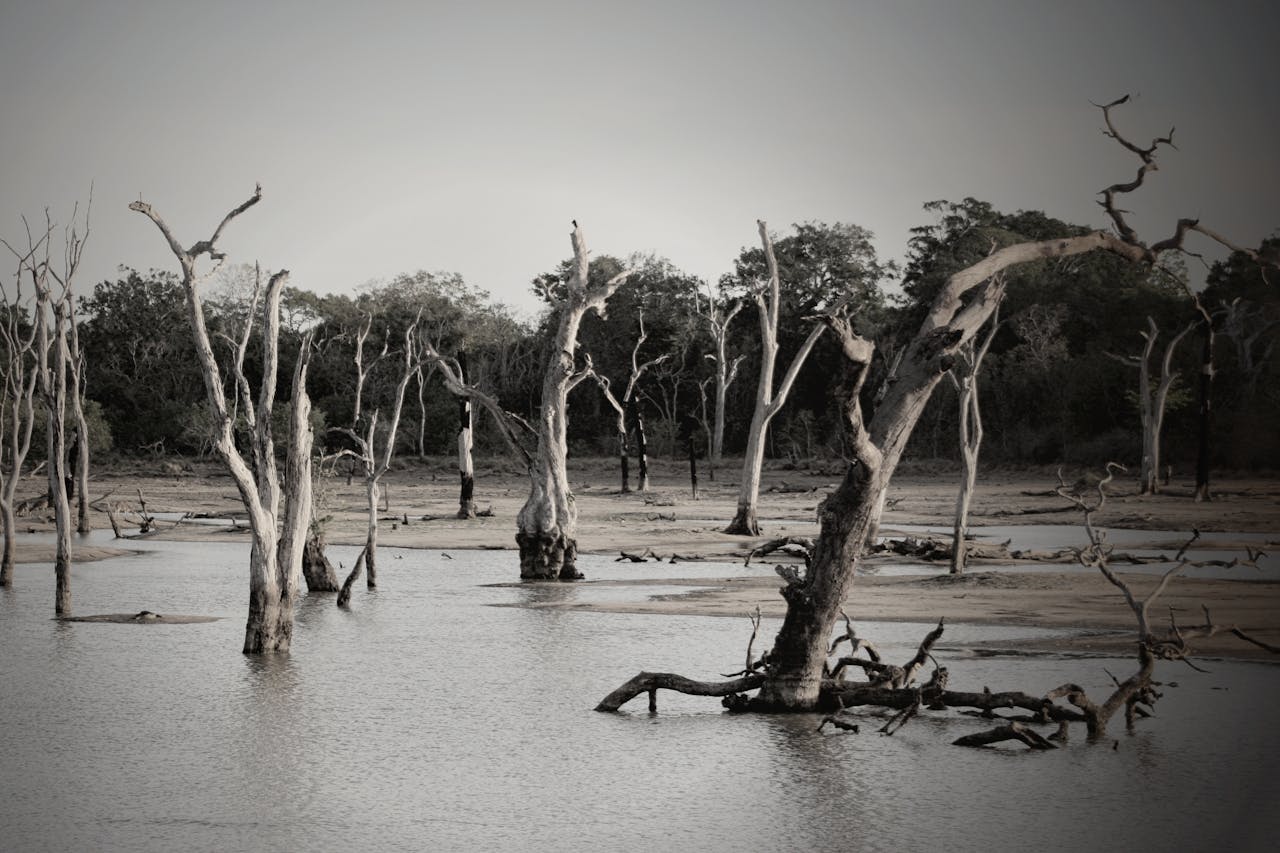Garissa, Kenya – Abdi Hussein sat alone on a Kenyan road strewn with ramshackle tents bound with plastic strings and covered with tarpaulins, peering into the sea of rust-coloured flood water.
The downpour inundated five dams, unleashing massive overflows of water downstream across Garissa, Tana River and Lamu — a region home to more than 1.5 million people.
“We haven’t seen much rain ourselves but our biggest undoing is living downstream,” said Mwanajuma Raha, whose house was torn down by the deluge that also swept away all her possessions.
Unrelenting
At 27, Suleiman Vuya Abdulahi has been displaced by floods seven times, including when he was just an infant.
But nothing prepared the soft-spoken farmer with tired brown eyes for this year’s disaster.
Marooned and unable to swim, he spent days on a rooftop, barely above the water, waiting anxiously for help as he watched the rains take over the land.
Displaced in November for three months, he had barely picked up the pieces of his life before the monsoons forced him to leave home again.
“We, ordinary citizens, are really struggling,” he told AFP.
Some people are refusing to leave their homes for fear of seeing them looted, choosing to live on rooftops and wading or swimming to nearby roads when they need food supplies.
The main road into Garissa, a key commercial hub near the border with Somalia, has been cut off, forcing all deliveries to be made by air or boat and causing prices to soar.
“We have never seen such a thing in our region,” said 64-year-old village elder Boya Ali Karani, now sleeping on the roadside after the rains destroyed his house.
No food, no sleep
At the makeshift pier outside Garissa, motorboats — which used to ferry tourists on Lake Naivasha more than 400 kilometres (250 miles) away — are in constant demand as they cart people and supply desperately needed food.
But the journey can be deadly, with a packed passenger boat capsizing last month. Seven bodies, including that of a schoolgirl, have been retrieved. A dozen people are still missing.
Boatman Mohamed Mansur Ali, 36, who was involved in the rescue operation, said the work was “very difficult.”
“First, you don’t get any sleep and it is very tiring because you arrive at work at 6:00 am and finish work at 6:00 pm,” he told AFP.
“You could be resting but then again get a call about a patient who needs to go to the hospital.”
The authorities have put some restrictions in place since the accident, with the navy stationed at the pier to ensure every passenger wears a life jacket and boats are not overloaded.
There are fears that the crisis could worsen as the rains continue, with the massive Masinga dam in central Kenya already at “historic” highs.
Daud Ahmed Shalle, the regional coordinator for the Kenya Red Cross, said the situation was “dire” in the 11 camps housing nearly 6,500 families in Garissa county.
“We have a lot of people in the… camps whose basic need, or most pressing need right now, is lack of food,” he told AFP.
Campaigners have called for more financing to tackle the crisis, pointing out that the worst affected communities are the ones contributing the least to extreme weather phenomena.
“The impact of climate change on communities is irreversible and will only worsen, leading to a continuous rise in the global demand for humanitarian assistance,” said Melaku Yirga, East and Southern Africa regional director for US development charity Mercy Corps.
Follow African Insider on Facebook, Twitter and Instagram
Source: AFP
Picture: Pexels
For more African news, visit Africaninsider.com


